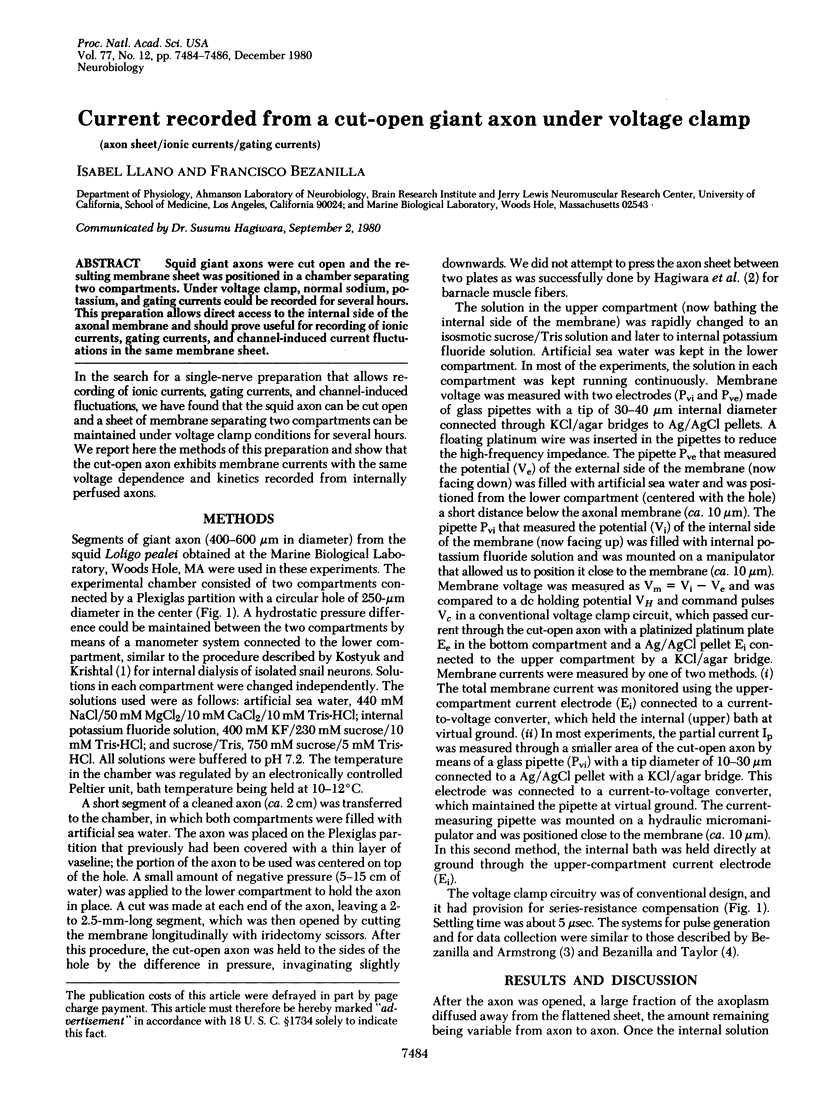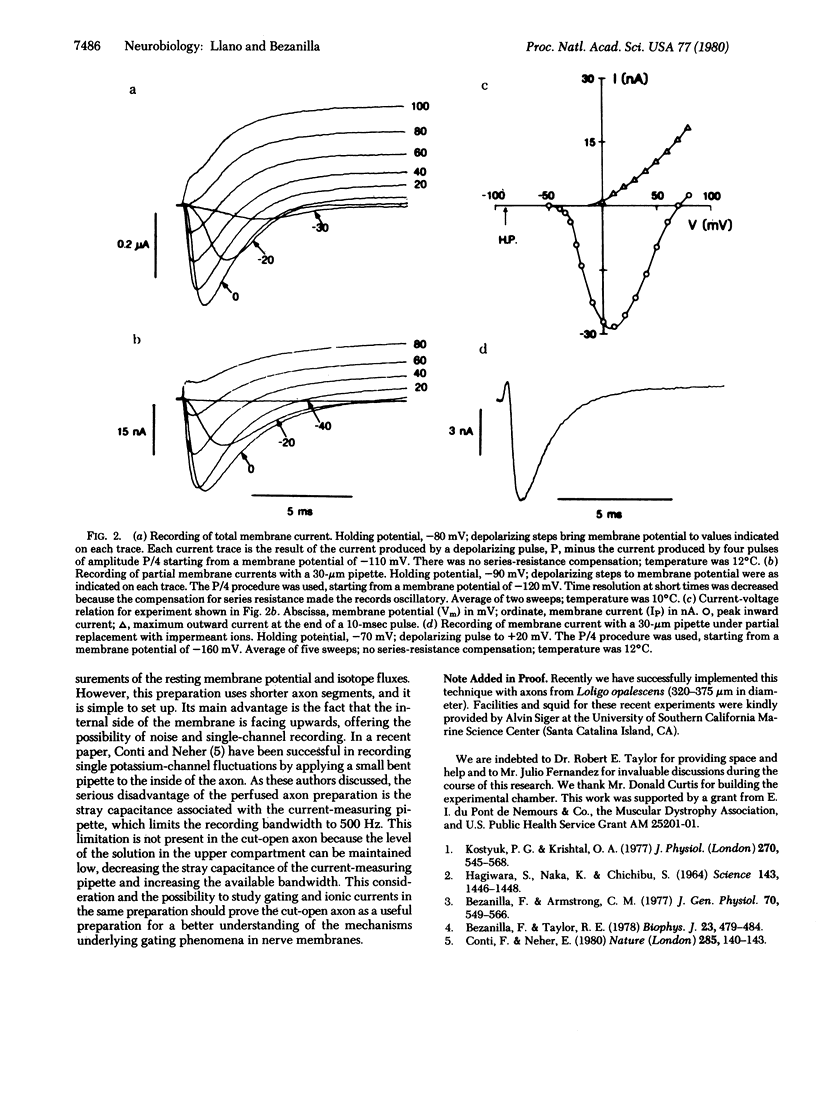Abstract
Squid giant axons were cut open and the resulting membrane sheet was positioned in a chamber separating two compartments. Under voltage clamp, normal sodium, potassium, and gating currents could be recorded for several hours. This preparation allows direct access to the internal side of the axonal membrane and should prove useful for recording of ionic currents, gating currents, and channel-induced current fluctuations in the same membrane sheet.
Full text
PDF


Selected References
These references are in PubMed. This may not be the complete list of references from this article.
- Bezanilla F., Armstrong C. M. Inactivation of the sodium channel. I. Sodium current experiments. J Gen Physiol. 1977 Nov;70(5):549–566. doi: 10.1085/jgp.70.5.549. [DOI] [PMC free article] [PubMed] [Google Scholar]
- Bezanilla F., Taylor R. E. Temperature effects on gating currents in the squid giant axon. Biophys J. 1978 Sep;23(3):479–484. doi: 10.1016/S0006-3495(78)85464-2. [DOI] [PMC free article] [PubMed] [Google Scholar]
- Conti F., Neher E. Single channel recordings of K+ currents in squid axons. Nature. 1980 May 15;285(5761):140–143. doi: 10.1038/285140a0. [DOI] [PubMed] [Google Scholar]
- HAGIWARA S., NAKA K. I., CHICHIBU S. MEMBRANE PROPERTIES OF BARNACLE MUSCLE FIBER. Science. 1964 Mar 27;143(3613):1446–1448. doi: 10.1126/science.143.3613.1446. [DOI] [PubMed] [Google Scholar]
- Kostyuk P. G., Krishtal O. A., Shakhovalov Y. A. Separation of sodium and calcium currents in the somatic membrane of mollusc neurones. J Physiol. 1977 Sep;270(3):545–568. doi: 10.1113/jphysiol.1977.sp011968. [DOI] [PMC free article] [PubMed] [Google Scholar]


